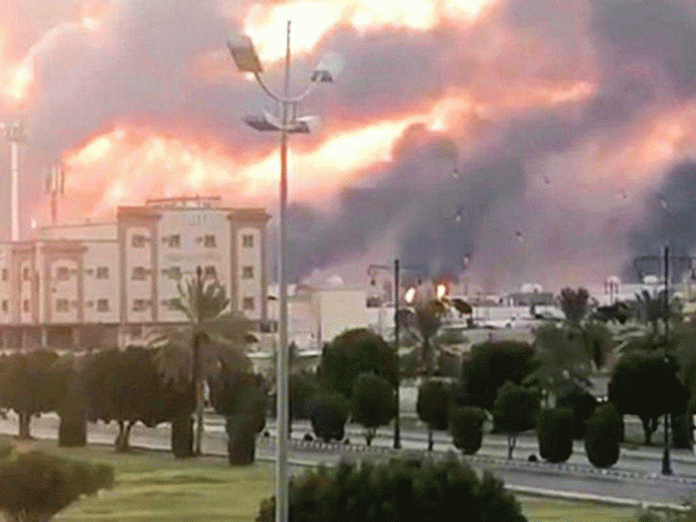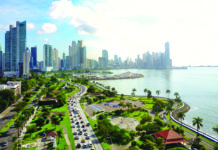“The facts, Ma’am, just the facts,” as fictional detectives used to say. So let’s look at the evidence.
1. President Rouhani of Iran was in Turkey meeting with Putin and Erdogan. All three were in favor of a complete pull out of all Iranian troops from Syria. This withdrawal was anathema to the Ayatollah and the IRGC. I think it is no coincidence that the bombing of Saudi Arabia was timed to completely disrupt the Ankara Summit.
2. The NSA recorded a conversation between IRGC commander Gen. Qassem Suleimani and the Ayatollah in which the supreme religious leader gave his personal approval for the IRGC’s missile and drone attack on Saudi Arabia, “but only on the condition that it be carried out in a way that made it possible to deny Iranian involvement.”
General Suleimani promised a level of secrecy that he could not deliver.
3. Highly classified American satellite photos have captured the IRGC making preparations for the sneak attack from the Ahvaz air base in southwestern Iran, but these spy photos cannot be released in court. There is a mountain of incriminating evidence that is about to be made public.
Iran again
Acruise missile is supposed to explode with such force that it destroys all forensic evidence of its manufacture. But like the vehicle identification number on a burned out automobile, the serial number often survives to begin the trail of forensic evidence.
The Saudi government was surprised to find that some of the cruise missiles aimed at its oil fields not only survived, but had never even exploded. The photographs show that at least one of the cruise missile casings was almost completely intact. It simply ran out of gas and fell to earth into the soft sand dunes just north of the Saudi oil installations.
That one or more cruise missiles did not destroy themselves in an explosion is a gift to investigators. That one of these missiles survived almost intact by skidding down the side of a sand dune is almost miraculous, but it is not the first time such miracles have occurred to point the finger of guilt at Iran.
The bombing of a civilian airliner over Lockerbie, Scotland, took place at such a high altitude that it scattered debris over several square miles below. Volunteers searched every inch of those several square miles and discovered a fragment of an electronic circuit board manufactured in Switzerland. The exact circuit board was in the Swiss corporate records as sold to Iran. The same circuit board became part of a bomb detonator rigged to explode when the plane reached a high altitude. The bomb was placed on board the plane’s luggage compartment at the request of Iran by proxy terrorists in Libya. A tiny piece of a circuit board unraveled the entire plot.
Judging from the nearly intact body and nose cone of the cruise missile in Saudi Arabia, the entire circuit board that steers the missile in flight most likely survived as well. It contains all the evidence to hang the war criminals who used it in a sneak attack on Saudi Arabia.
These types of solid state navigational circuit boards are quite sturdy. Even if cracked into a few pieces, it does not matter. A forensic specialist is already at work putting Humpty Dumpty back together again.
What will happen next?
In a few days, a few weeks at most, the navigational circuit board will speak to us again. I know what kinds of things it will say. Whenever any type of modern aircraft, cruise missile or drone is getting ready to be launched, the exact coordinates of its original launch point must be dialed in to the circuit board if there is to be any chance of having it steer itself along the planned route and arrive at its programmed destination.
The UN has a “panel of experts” who know about aircraft bombing circuit boards and such. They have already been invited to Saudi Arabia. When that circuit board is next turned on, the first electronic chirp out of its mouth will be the precise grid location of its launch point. The final chirp will contain the exact grid coordinates of the exact oil structure it was targeted to destroy.
If the point of launch coordinates turns out to be same air base seen by our spy satellites in the southwestern tip of Iran, then we have clear confirmation from the circuit board that Iran was indeed the nation that fired the missile.
If the point of destination from the circuit board turns out to be one of the undestroyed pumping stations, storage tanks or refinery buildings within the same Saudi oil field that was struck by the other cruise missiles, then the UN panel of experts will know something even bigger: This one missile that ran out of gas was part of a barrage of 50 cruise missiles, all fired at precisely the same time from the same little corner of southern Iran, each precisely aimed to destroy a different structural component within the same Saudi oil field at the exact same moment. Such a barrage could only have taken place under the direct order of a senior government official. The Iranian government says that the Yemeni government launched the missiles.


























